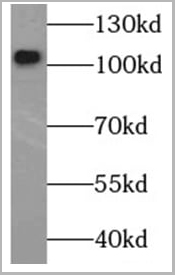Specificity
Data can be obtained on request.
Samples
Serum, plasma, cells, culture supernatant and other samples
Preparation and Storage
Store at 2-8 degree C. Valid for 12 months
Related Product Information for Triglyceride assay kit
Principle of the Assay: The C5a ELISA KIT is an enzyme immunoassay for the determination of human anaphylatoxin C5a and is based on the sandwich principle. Due to cross-reactivity of the monoclonal antibodies with complement factor C5, C5 in the sample is removed by precipitation prior to analysis. The resulting clear supernatant contains the C5a to be determined (10,11). During the first incubation the C5a in the sample binds to murine anti C5a monoclonal antibodies (mab 561), which are attached to the surface of the microtitration plate. Unbound constituents are then removed by washing and, in a second reaction, peroxidase conjugated monoclonal antibodies (Mab 557) are added and bound to a different epitope on C5a. The excess enzyme conjugated antibodies are removed by washing; the bound enzyme activity is then determined. The enzymatic reaction between hydrogen peroxide and chromogen is terminated by the addition of dilute sulphuric acid. The intensity of the colour intensity, which is proportional to the concentration of C5a, is determined photometrically. The concentration range of appox. 0.1 to 10 ug/L (the exact values are indicated on the labels) is covered by the standards contained in the kit. For higher concentrations the sample must be diluted with dilution reagent!!Background/Introduction: The C5a Enzyme Immunoassay Kit provides materials for the quantitative determination of Anaphylatoxin C5a in human plasma or urine. The complement system consists of more than 20 proteins which evolved as defense system against invading microorganisms. It can also be activated in a variety of disease states or upon contact with medical devices or drugs (1). Upon activation, a cascade of proteolytic enzymes releases the anaphylatoxins C3a, C4a and C5a from their respective precursors (2). These fragments exert various biological functions such as histamine release, smooth muscle contraction, increase in capillary permeability or immunomodulation (3). In addition, C5a and its degraded form C5a-desArg are highly potent chemotactic agents for polymorphonuclear leukocytes, which then will release tissue degradative enzymes and oxygen radicals (4). This in turn will also lead to activation of other humoral systems such as coagulation and fibrinolysis (5). Thus, C5a is probably the most important complement-derived proinflammatory mediator. C5a is believed to play a pivotal role in the pathogenesis of septic shock, the adult respiratory distress syndrome, acute pancreatitis and the deleterious effects after myardial infarction (6,7,8). Recently it has been shown that C5a is closely associated with the capillary leak syndrome in leukemic children after bone marrow transplantation. C5a is also a marker in urine for predicting the onset of acute graft rejection after kidney transplantation (9). With respect to possible deleterious consequences, C5a determination may be indicated during hemodialysis, after cardiopulmonary bypass or after any other contact with medical devices (10).
Similar Products
Product Notes
The Triglyceride (Catalog #AAA22086) is an Assay Kit and is intended for research purposes only. The product is available for immediate purchase. It is sometimes possible for the material contained within the vial of "Triglyceride, Assay Kit" to become dispersed throughout the inside of the vial, particularly around the seal of said vial, during shipment and storage. We always suggest centrifuging these vials to consolidate all of the liquid away from the lid and to the bottom of the vial prior to opening. Please be advised that certain products may require dry ice for shipping and that, if this is the case, an additional dry ice fee may also be required.Precautions
All products in the AAA Biotech catalog are strictly for research-use only, and are absolutely not suitable for use in any sort of medical, therapeutic, prophylactic, in-vivo, or diagnostic capacity. By purchasing a product from AAA Biotech, you are explicitly certifying that said products will be properly tested and used in line with industry standard. AAA Biotech and its authorized distribution partners reserve the right to refuse to fulfill any order if we have any indication that a purchaser may be intending to use a product outside of our accepted criteria.Disclaimer
Though we do strive to guarantee the information represented in this datasheet, AAA Biotech cannot be held responsible for any oversights or imprecisions. AAA Biotech reserves the right to adjust any aspect of this datasheet at any time and without notice. It is the responsibility of the customer to inform AAA Biotech of any product performance issues observed or experienced within 30 days of receipt of said product. To see additional details on this or any of our other policies, please see our Terms & Conditions page.Item has been added to Shopping Cart
If you are ready to order, navigate to Shopping Cart and get ready to checkout.










